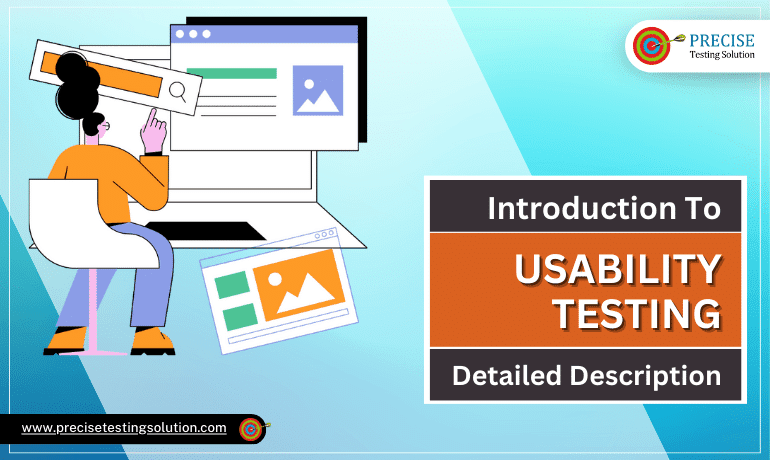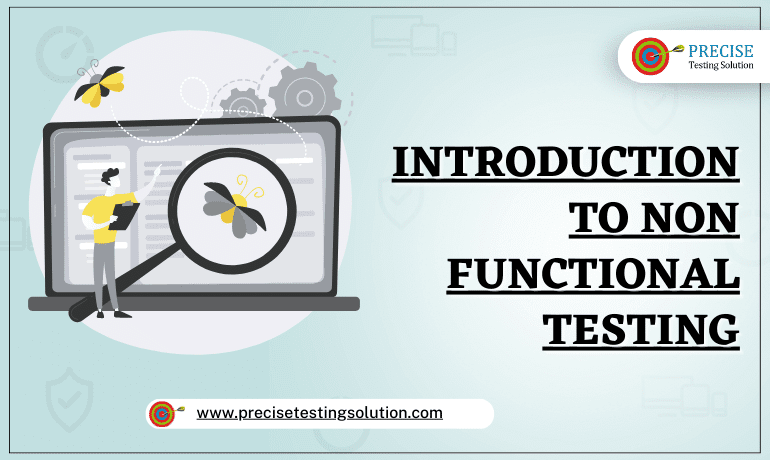Usability Testing : What It Is, Objectives, Process, Methods, Pros and Cons
In this blog post, we will discuss the concept of usability testing in software testing, objectives of performing usability testing, the complete process of performing usability testing, types of usability testing methods or techniques, the advantages and disadvantages of performing usability testing for any software application in a detailed & comprehensive manner.
Concept of Usability Testing
- Usability Testing comes under the non-functional testing method and basically, it is the type of software testing technique used to measure the easiness and user-friendliness for any software application or in simple words, how much easy and user-friendly the software application is.
- Usability Testing, if we have to define in other way, is one of the unique software testing techniques used to identify the defect in the end-user communication of any software application. That’s why it is also known as user experience (UX) testing as well.
Objectives of Usability Testing
Following are the objectives in focus for every test engineer while performing usability testing of any software application:
1. The primary objective of performing usability testing for any software application is to check its effectiveness, user-friendliness, efficiency, and accuracy for the end-user who is meant to use it according to specified functional and business requirements.
2. The goal of performing usability testing is to satisfy end-users of the application, and it focuses mainly on the following parameters:
- Effectiveness – This parameter of usability testing largely focuses on testing the easiness & usefulness of the application to the end-users for e.g., content, color, images, icons etc. used are aesthetically pleasing or not.
- User Friendliness – This parameter of usability testing ensures the user or customer’s satisfaction who is meant to use the application as we know satisfied user or customer can easily or freely use the application.
- Efficiency – This parameter of usability testing explains how much time the end-user of the application can take to execute his/her fundamental or, we can say, undeveloped task like uniformity in the format of screen for application and option to search within software application.
- Accuracy – This parameter of usability testing ensures that no inappropriate or incorrect or irrelevant data or information like contact information, address etc. exists in the software application. Also, no broken links should be present in the application in order to maintain the accuracy of the application.

The Process of Usability Testing
The process involved in performing usability testing for any software application consists of the following stages: –
Step-1) Planning Stage – This is the very first important and crucial stage in the usability testing process, where the testing team makes the test plan and generates which helps the testing team to complete the usability testing tasks. The primary goal of this stage is to fix the crucial features and elements of the application rather than testers sit in front of the application and start recording their activities.
Step-2) Recruiting Stage – This is the second important stage of usability testing process after planning stage which involves the hiring or recruiting of the end-user delegates and the participants or test engineers as per the budget and density of the software product or application. These participants or test engineers are prepared to sit across the test sessions and validate the correctness and usability of the software product.
Step-3) Test Execution Stage – This is the third stage of usability testing process after the execution of first two stages. In this stage, the test engineers execute the usability testing and implement their assigned responsibilities in order to test the software product to find any defects or irregularities and also record them correctly.
Step-4) Data Analysis Stage – This is the fourth stage of usability testing process after test execution and result documentation is done. In this stage, data from usability tests is thoroughly analyzed to derive meaningful inferences and give actionable recommendations to improve the overall usability of the software product.
Step-5) Reporting Stage – This is the fifth and final stage of usability testing process after performing all the above steps successfully in which finding or outcomes of the usability test is shared with all concerned stakeholders which includes designer, developer and client.
Key Components of Usability Testing
1. Setting Clear Objectives – Prior to accomplishing usability testing, it’s vital that clear objectives are set. These goals guide the whole trying-out procedure, making sure that the focal point remains evaluating specific components of the product that are critical for its usability.
2. Selecting the Right Participants – The achievement of usability testing in large part depends on the choice of participants. It is essential to choose people who closely resemble the actual users of the product. This guarantees that the comments and insights collected are applicable and can be efficiently implemented to improve the product.
3. Crafting Realistic Scenarios – The situations utilized in usability testing need to mirror actual-existence conditions that customers might come across while using the product. This makes the checking-out method more genuine and the outcomes more reliable.
4. Employing Various Methodologies – Usability testing can be performed using diverse methodologies, ranging from in-character classes to remote testing. The choice of methodology depends on the product, the objectives of the checkout, and the assets available.
Methods of Usability Testing
Following is some of the methods or techniques used to perform usability testing for any software application: –
- A/B Testing – This usability testing approach includes a comparative analysis with some of the other elements of the application such as color, text, or difference of the interface.
- Hallway Testing – This usability testing approach is one of the most successful and cost-saving as compared to the other usability testing methods in which some random people instead of skilled professionals can test the application even without having prior knowledge of the application.
- Laboratory Testing – This usability testing approach is implemented by the team in an individual lab room in which the role of observers is to monitor the behavior of the testers and done reporting the outcome or result of testing.
Advantages of Usability Testing
Following is some of the advantages of performing usability testing for any software application: –
- Usability Testing will make sure that the software application meets according to the needs or requirement of the client or end-user.
- Usability Testing helps the tester to find usability errors or possible bugs and defects in the software application.
- Usability Testing makes the application highly effective, accurate and efficient.
Disadvantages of Usability Testing
Following is some of the disadvantages or we can say drawbacks of performing usability testing for any software application: –
- Usability Testing is an expensive process as it requires many resources to establish a usability test lab, and sometimes hiring or recruiting a usability test engineer could be costly as well.
- From the above discussion, we have understood that usability testing is done by the end-users of the application. Hence, it is a bit harder sometimes to find the volunteers who can work as test engineers.
Conclusion
In the end, we can conclude to say that performing usability testing is necessary as it is one of the most effective methods of software testing which helps the test engineers and developers to sustain the usability, correctness, consistency, performance, and other essential characteristics of the software application.
Elevate your software’s user experience with Precise Testing Solutions., For more information, Visit Our Website at www.precisetestingsolution.com
or call our office @ 0120-3683602
or you can send us an email at [email protected]
We look forward to helping your business grow.
A Detailed Guide to Non-functional Testing
In this blog post, we will discuss the concept

